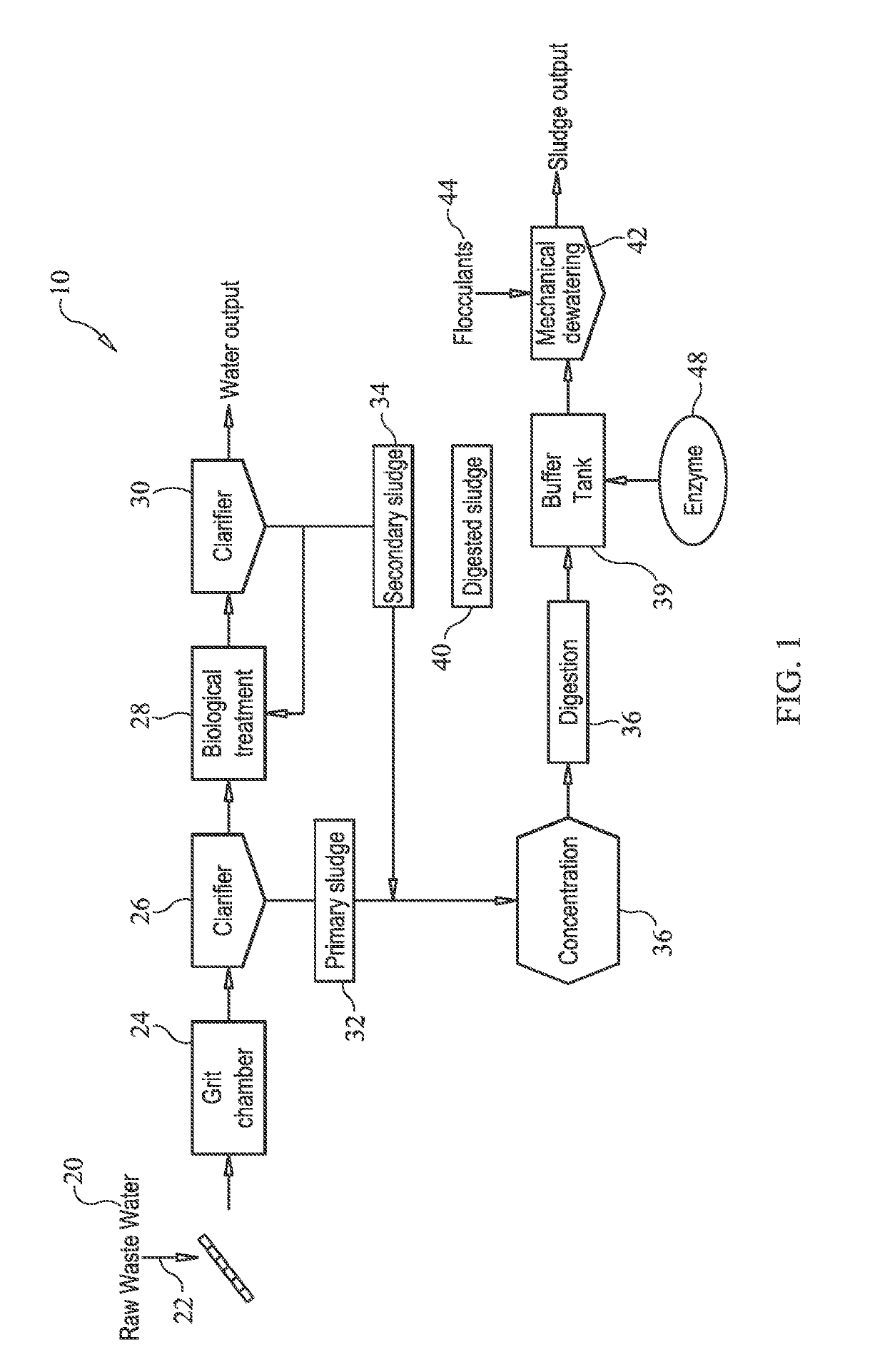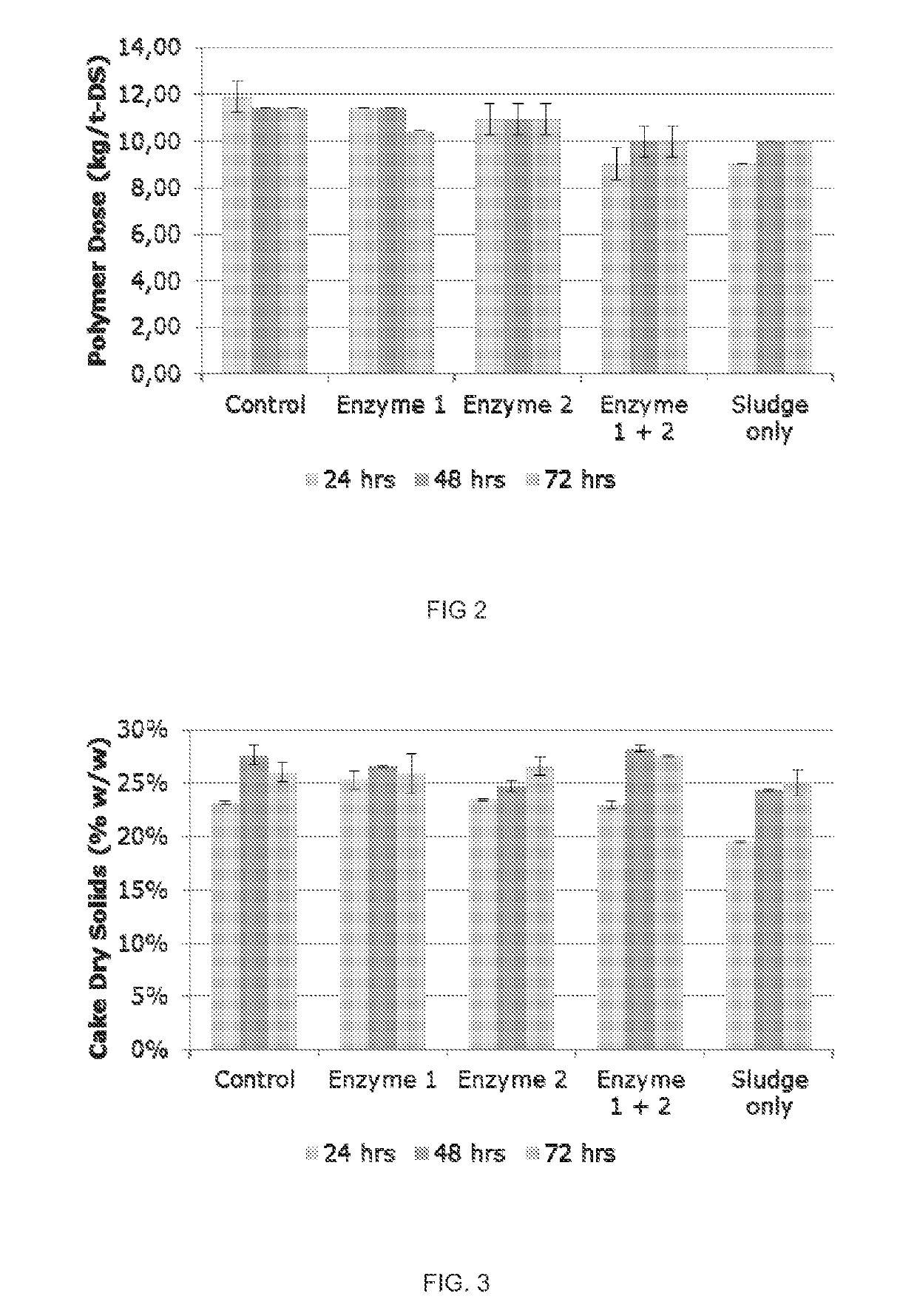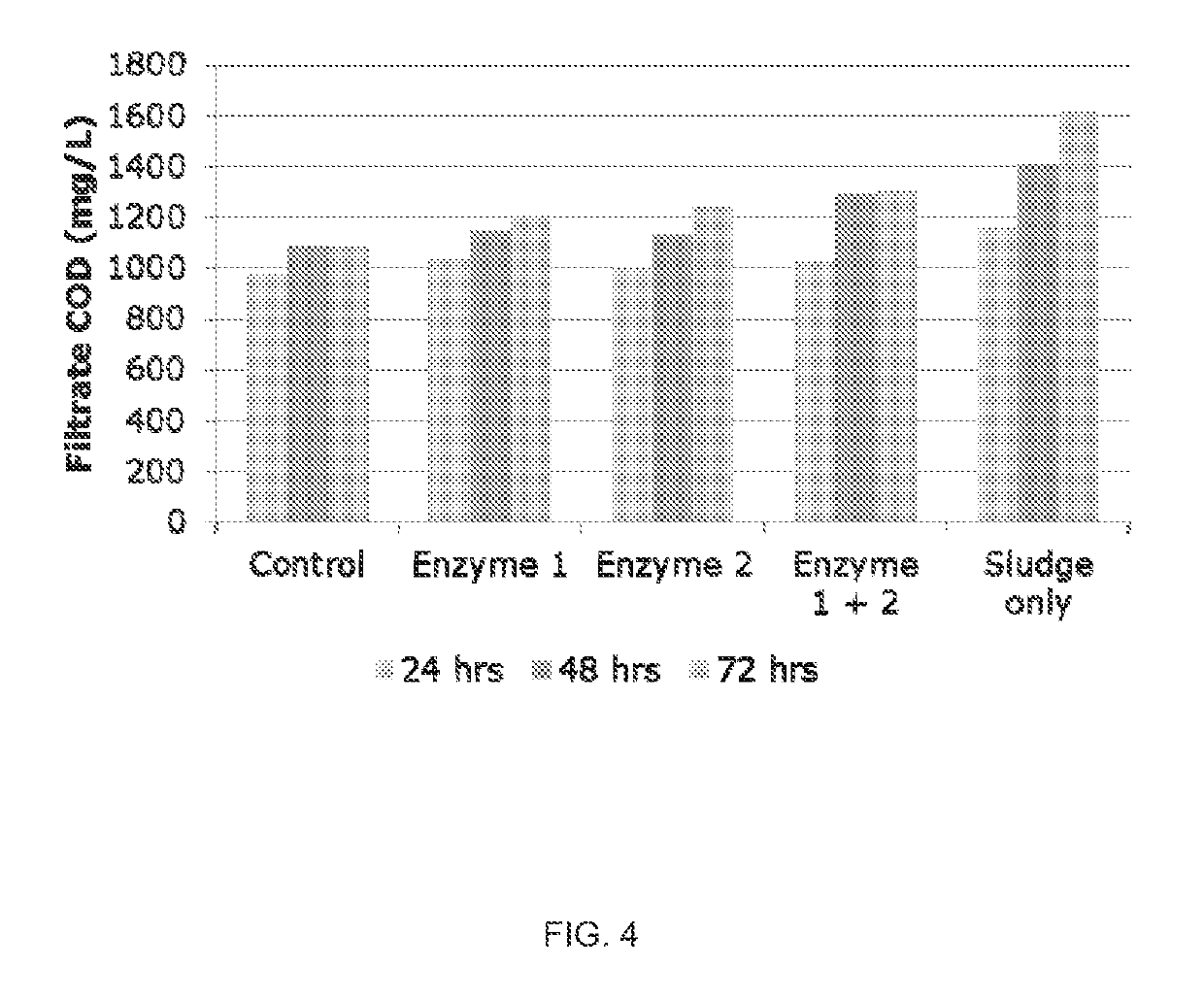Methods For Enhancing The Dewaterability Of Sludge With Enzyme Treatment
a technology of enzyme treatment and dewatering ability, which is applied in the direction of biological water/sewage treatment, biological sludge treatment, chemistry apparatus and processes, etc., to achieve the effect of enhancing the dewatering ability of residuals, reducing the use of polymers, and reducing the volume of sludg
- Summary
- Abstract
- Description
- Claims
- Application Information
AI Technical Summary
Benefits of technology
Problems solved by technology
Method used
Image
Examples
example 1
Materials
[0085]Digested sludge from a municipal wastewater plant
[0086]Cellic® CTec3 brand cellulase and hemicellulase complex (available from Novozymes A / S).
[0087]SAVINASE brand protease (available from Novozymes A / S).
[0088]Heating cabinet (30° C.)
Pretreating Method
[0089]1. Measure 30 mL of sludge into a 50 mL tube[0090]2. Add sufficient amount of liquid Cellic® CTec3 brand cellulase and hemicellulase complex and SAVINASE brand protease to the sludge sample[0091]3. Seal the reaction tube and put into a heating cabinet at 30° C.[0092]4. Remove from heating cabinet after 24 hrs of reaction time[0093]5. The sludge sample is now a pretreated sludge composition and ready for use in dewatering trials
Lab Scale Dewatering: Materials & Method
Materials
[0094]A potato ricer or press[0095]Flocculent—cationic polyacrylamide high molecular weight polymer[0096]A beaker for mixing sludge and flocculent[0097]A filter cloth[0098]Crucible for dry solids analysis
Method
[0099]1. Prepare the polymer soluti...
example 1 conclusions
[0113]The application of the protease and cellulase separately did not provide a significant decrease in the polymer consumption required to achieve a good level of solids flocculation and dewaterability using the press method[0114]The application of the protease and cellulase together lead to a significant decrease in polymer requirement, while maintaining the quality of the filtrate and the dryness of the cake achieved in the dewatering process
Example 2
Materials
[0115]Digested Sludge from a Municipal Wastewater Plant
Cellic® CTec3 brand cellulase and hemicellulase complex (available from Novozymes A / S).
SAVINASE brand protease (available from Novozymes A / S).
Heating cabinet (30° C.)
Method
[0116]1. Measure 30 mL of sludge into a 50 mL tube[0117]2. Add the required amount of liquid enzyme product to the sludge sample[0118]3. Seal the reaction tube and put into a heating cabinet at 30° C.[0119]4. Remove from heating cabinet after required reaction time (24, 48 and 72 hrs)[0120]5. The slud...
example 2
Conclusions of Example 2
[0146]Overall, the application of enzymes to the sludge digested sludge sample showed positive results, both with regards to polymer reduction and cake solids increase. Key findings from this trial on digested sludge include:[0147]The combination of Savinase and CTec3 led to a significantly higher level of polymer reduction required in the dewatering process compared to the control sample or when the enzymes were added separately. This indicates that there is a synergistic effect when the enzymes are added together.[0148]The effect of the enzymes on polymer reduction decreases over time, likely due to the activity of the enzymes on the sludge solids, releasing more “soluble” biocolloids. This is reflected in the filtrate COD results.[0149]Generally, the results indicate that a shorter enzyme incubation time is more suitable for polymer reduction, while a longer retention time can provide significant cake DS benefits. This outcome fits well when the enzyme pro...
PUM
| Property | Measurement | Unit |
|---|---|---|
| temperature | aaaaa | aaaaa |
| temperature | aaaaa | aaaaa |
| temperature | aaaaa | aaaaa |
Abstract
Description
Claims
Application Information
 Login to View More
Login to View More - R&D
- Intellectual Property
- Life Sciences
- Materials
- Tech Scout
- Unparalleled Data Quality
- Higher Quality Content
- 60% Fewer Hallucinations
Browse by: Latest US Patents, China's latest patents, Technical Efficacy Thesaurus, Application Domain, Technology Topic, Popular Technical Reports.
© 2025 PatSnap. All rights reserved.Legal|Privacy policy|Modern Slavery Act Transparency Statement|Sitemap|About US| Contact US: help@patsnap.com



